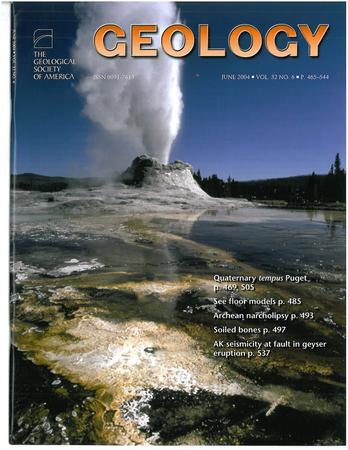Evaluating the resolving power of apatite 4He/3He thermochronology: Insights from the Fish Canyon Tuff
IF 4.6
1区 地球科学
Q1 GEOLOGY
引用次数: 0
Abstract
Apatite 4He/3He thermochronology has the potential to provide high-resolution low-temperature thermal histories that bring valuable insight into near-surface crustal processes. However, this system has yet to be directly evaluated using single-grain 4He/3He analyses from a natural sample with an established thermal history. We present apatite 4He/3He spectra from the widely used Fish Canyon Tuff (FCT) age standard (San Juan volcanic field, southern Colorado, USA), collected at two localities with contrasting thermal histories: (1) a distal locality (FCT-D) where the early Oligocene eruptive age of the FCT is preserved in the apatite (U-Th)/He (AHe) system and the thermal history is well established; and (2) the classic FCT sampling locality (FCT-C) with younger, Early Miocene AHe dates and an unconstrained posteruptive thermal history. FCT-D apatite shows 4He/3He spectra indicative of no diffusive loss, with relative edge depletion of 4He induced by alpha ejection only, corroborating rapid eruptive cooling. In contrast, FCT-C apatite revealed notably diffusive 4He/3He spectra. Thermal-history inversions highlight the resolving power of apatite 4He/3He thermochronology, demonstrating its ability to (1) independently resolve rapid eruptive cooling at the FCT-D site, and (2) improve the resolution of postemplacement reheating and Early Miocene cooling at the FCT-C site. Refined FCT-C thermal histories reveal a distinctive onset of moderate cooling at ca. 20−19 Ma, likely reflecting footwall topographic development coinciding with regional Rio Grande rifting. This collective assessment of 4He/3He systematics further verifies its ability to substantially improve thermal history resolution, which is crucial to elucidating mechanisms driving crustal cooling.评价磷灰石4He/3He热年代学的分辨能力:来自鱼谷凝灰岩的启示
磷灰石4He/3He热年代学有潜力提供高分辨率的低温热历史,为近地表地壳过程带来有价值的见解。然而,该系统还没有被直接评估,使用单粒4He/3He分析从一个具有既定热历史的自然样品。我们从广泛使用的鱼峡谷凝灰岩(FCT)年龄标准(美国南科罗拉多圣胡安火山场)中收集了两个具有对比热历史的地方的磷灰石4He/3He光谱:(1)远端位置(FCT- d), FCT的早渐新世喷发年龄保存在磷灰石(U-Th)/He (AHe)体系中,热历史很好地建立;(2)经典的FCT采样地点(FCT- c)具有较年轻的早中新世AHe年代和无约束的后测热史。FCT-D磷灰石的4He/3He光谱表明没有扩散损失,仅由α喷射引起的4He相对边缘耗尽,证实了快速喷发冷却。FCT-C显示磷灰石具有明显的4He/3He扩散谱。热历史反演突出了磷灰石4He/3He热年代学的分辨能力,表明其能够(1)独立分辨FCT-D遗址的快速喷发冷却,(2)提高FCT-C遗址定位后再加热和早中新世冷却的分辨能力。精细的FCT-C热历史显示,在约20 ~ 19 Ma时出现了明显的中等冷却,可能反映了与区域里约热内卢大裂谷作用相一致的下盘地形发育。对4He/3He系统的集体评估进一步验证了其大幅提高热历史分辨率的能力,这对于阐明驱动地壳冷却的机制至关重要。
本文章由计算机程序翻译,如有差异,请以英文原文为准。
求助全文
约1分钟内获得全文
求助全文
来源期刊

Geology
地学-地质学
CiteScore
10.00
自引率
3.40%
发文量
228
审稿时长
6.2 months
期刊介绍:
Published since 1973, Geology features rapid publication of about 23 refereed short (four-page) papers each month. Articles cover all earth-science disciplines and include new investigations and provocative topics. Professional geologists and university-level students in the earth sciences use this widely read journal to keep up with scientific research trends. The online forum section facilitates author-reader dialog. Includes color and occasional large-format illustrations on oversized loose inserts.
 求助内容:
求助内容: 应助结果提醒方式:
应助结果提醒方式:


